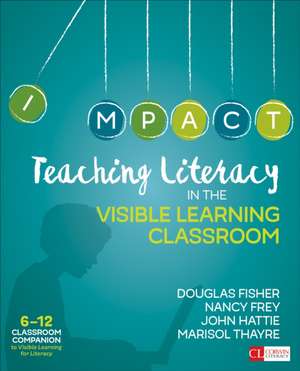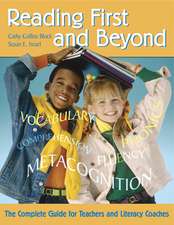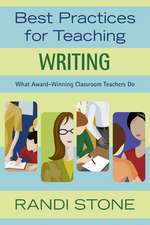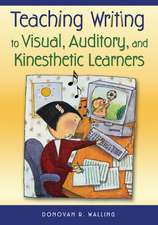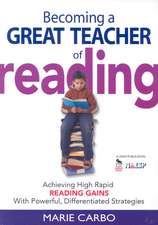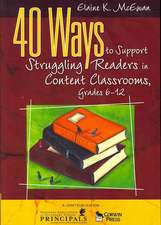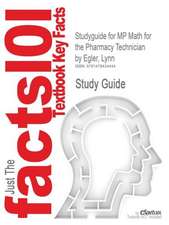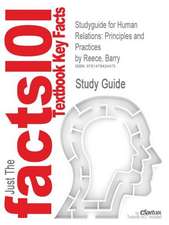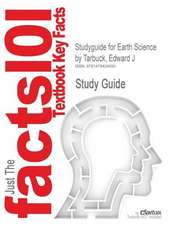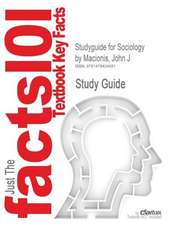Teaching Literacy in the Visible Learning Classroom, Grades 6-12: Corwin Literacy
Autor Douglas Fisher, Nancy Frey, John Hattie, Marisol Thayreen Limba Engleză Paperback – 19 iul 2017
Din seria Corwin Literacy
-
 Preț: 285.18 lei
Preț: 285.18 lei -
 Preț: 158.08 lei
Preț: 158.08 lei -
 Preț: 278.39 lei
Preț: 278.39 lei -
 Preț: 243.82 lei
Preț: 243.82 lei -
 Preț: 244.25 lei
Preț: 244.25 lei -
 Preț: 88.42 lei
Preț: 88.42 lei -
 Preț: 273.64 lei
Preț: 273.64 lei -
 Preț: 274.70 lei
Preț: 274.70 lei -
 Preț: 157.08 lei
Preț: 157.08 lei -
 Preț: 280.29 lei
Preț: 280.29 lei -
 Preț: 284.26 lei
Preț: 284.26 lei -
 Preț: 294.79 lei
Preț: 294.79 lei -
 Preț: 281.36 lei
Preț: 281.36 lei -
![Mindsets and Moves: Strategies That Help Readers Take Charge [Grades K-8]](https://i3.books-express.ro/bs/9781506314938/mindsets-and-moves.jpg) Preț: 156.17 lei
Preț: 156.17 lei -
 Preț: 283.27 lei
Preț: 283.27 lei -
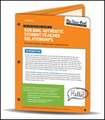 Preț: 88.42 lei
Preț: 88.42 lei -
 Preț: 281.94 lei
Preț: 281.94 lei -
 Preț: 280.29 lei
Preț: 280.29 lei -
 Preț: 278.64 lei
Preț: 278.64 lei -
 Preț: 267.50 lei
Preț: 267.50 lei -
 Preț: 226.80 lei
Preț: 226.80 lei -
 Preț: 267.70 lei
Preț: 267.70 lei -
 Preț: 278.10 lei
Preț: 278.10 lei -
 Preț: 245.45 lei
Preț: 245.45 lei -
 Preț: 230.63 lei
Preț: 230.63 lei -
 Preț: 272.62 lei
Preț: 272.62 lei -
![Every Minute Matters [Grades K-5]: 40+ Activities for Literacy-Rich Classroom Transitions](https://i4.books-express.ro/bs/9781544382449/every-minute-matters-grades-k-5.jpg) Preț: 218.58 lei
Preț: 218.58 lei -
 Preț: 274.00 lei
Preț: 274.00 lei -
![Flash Feedback [Grades 6-12]: Responding to Student Writing Better and Faster – Without Burning Out](https://i4.books-express.ro/bs/9781544360492/flash-feedback-grades-6-12.jpg) Preț: 232.71 lei
Preț: 232.71 lei -
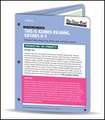 Preț: 88.67 lei
Preț: 88.67 lei -
 Preț: 180.48 lei
Preț: 180.48 lei -
 Preț: 273.44 lei
Preț: 273.44 lei -
 Preț: 173.02 lei
Preț: 173.02 lei -
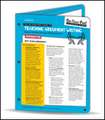 Preț: 88.67 lei
Preț: 88.67 lei -
 Preț: 236.11 lei
Preț: 236.11 lei -
 Preț: 236.11 lei
Preț: 236.11 lei -
 Preț: 256.83 lei
Preț: 256.83 lei -
 Preț: 291.04 lei
Preț: 291.04 lei -
 Preț: 288.67 lei
Preț: 288.67 lei -
 Preț: 273.44 lei
Preț: 273.44 lei -
 Preț: 184.56 lei
Preț: 184.56 lei -
 Preț: 174.52 lei
Preț: 174.52 lei -
 Preț: 275.92 lei
Preț: 275.92 lei -
 Preț: 140.61 lei
Preț: 140.61 lei -
 Preț: 278.10 lei
Preț: 278.10 lei -
![Comprehension [Grades K-12]: The Skill, Will, and Thrill of Reading](https://i3.books-express.ro/bs/9781071812839/comprehension-grades-k-12.jpg) Preț: 287.79 lei
Preț: 287.79 lei -
 Preț: 247.10 lei
Preț: 247.10 lei -
 Preț: 277.50 lei
Preț: 277.50 lei -
 Preț: 273.44 lei
Preț: 273.44 lei
Preț: 270.76 lei
Nou
51.82€ • 54.03$ • 43.06£
Carte disponibilă
Livrare economică 28 februarie-14 martie
Livrare express 13-19 februarie pentru 37.97 lei
Specificații
ISBN-10: 1506332374
Pagini: 232
Dimensiuni: 187 x 232 x 15 mm
Greutate: 0.48 kg
Ediția:First Edition
Editura: SAGE Publications
Colecția Corwin
Seria Corwin Literacy
Locul publicării:Thousand Oaks, United States
Cuprins
Chapter 1. Mobilizing Visible Learning for Literacy
Visible Learning for Literacy
Components of Effective Literacy Learning
Adolescent Literacy: Reading
Adolescent Literacy: Writing
Knowledge of How Students Learn
Developmental View of Learning
Meaningful Experiences and Social Interaction
Surface, Deep, and Transfer of Learning
What Students Need
Scheduling Instructional Time
Spotlight on Three Teachers
Conclusion
Chapter 2. Teacher Clarity
Understanding Expectations in Standards
Learning Intentions in Literacy
Student Ownership of Learning Intentions
Connecting Learning Intentions to Prior Knowledge
Make Learning Intentions Inviting and Engaging
Social Learning Intentions
Success Criteria in Literacy
Success Criteria Are Crucial for Motivation
Conclusion
Chapter 3. Deliberate and Direct Teaching
Relevance
Teacher Modeling
Pair With Think-Alouds
The “I” and “Why” of Think-Alouds
Students Should Think Aloud, Too
Checking for Understanding
Use Questions to Probe Student Thinking
Guided Instruction
Formative Evaluation During Guided Instruction
Independent Learning
Fluency Building
Application
Spiral Review
Extension
Closure
Conclusion
Chapter 4. Teacher-Led Dialogic Instruction
Effective Talk, Not Just Any Talk
Foster Deep Learning and Transfer
Listen Carefully
Facilitate and Guide Discussion
Teacher-Led Tools for Dialogic Instruction
Anticipation Guides
Pinwheel Discussions
Opinion Stations
Close and Critical Reading
Scaffolded Reading With Small Groups
Conclusion
Chapter 5. Student-Led Dialogic Learning
The Value of Student-to-Student Discussion
The Social and Behavioral Benefits of Peer-Assisted Learning
Fostering Collaborative Discussions
Teach Students to Develop Their Own Questions
Student-Led Tools for Dialogic Learning
Fishbowl
Gallery Walks
Book Clubs
Readers Theatre
Reciprocal Teaching
Peer Tutoring
Conclusion
Chapter 6. Independent Learning
Finding Flow
Independent Reading for Fluency and Knowledge Building
Independent Writing
Power Writing
Error Analysis
Extended Writing Prompts
Learning Words Independently
Independently Working With Words
Use Games to Foster Retention
Big Ideas About Independent Learning
Does It Promote Metacognition?
Does It Promote Goal Setting?
Does It Promote Self-Regulation?
Conclusion
Chapter 7. Tools to Use in Determining Literacy Impact
Do You Know Your Impact?
Do You Know Your Collective Impact?
ASSESSING READING
Assessing Background Knowledge
Cloze Procedure
Vocabulary Matching Assessment
Assessing Reading Comprehension
Informal Reading Inventories
Reading Fluency
Metacomprehension Strategies Index (MSI)
Assessing Attitudes Toward Reading
ASSESSING WRITING
Assessing Writing Fluency
Assessing Spelling
Assessing Writing Holistically
Literacy Design Collaborative Student Work Rubrics
Why Assess? Know Your Impact
Conclusion
Compendium of Assessments
Appendix: Effect Sizes
References
Index
Notă biografică
Douglas Fisher, Ph.D., is professor and chair of educational leadership at San Diego State University and a leader at Health Sciences High and Middle College. Previously, Doug was an early intervention teacher and elementary school educator. He is the recipient of an International Reading Association William S. Grey citation of merit and an Exemplary Leader award from the Conference on English Leadership of NCTE. He has published numerous articles on teaching and learning as well as books such as The Teacher Clarity Playbook, PLC+, Visible Learning for Literacy, Comprehension: The Skill, Will, and Thrill of Reading, How Tutoring Works, andHow Learning Works. Doug loves being an educator and hopes to share that passion with others.
